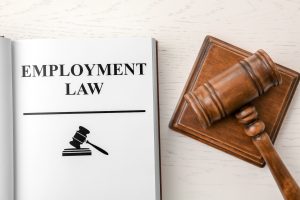 It is common for startup founders to forgo cash-based compensation and accept only equity in exchange for their services to their startups. Most startup founders assume wage and hour laws are inapplicable to them because they are the owners of their business. However, founders, much like non-owner employees, cannot, under most circumstances, work for free for their startups.
It is common for startup founders to forgo cash-based compensation and accept only equity in exchange for their services to their startups. Most startup founders assume wage and hour laws are inapplicable to them because they are the owners of their business. However, founders, much like non-owner employees, cannot, under most circumstances, work for free for their startups.
Under the Federal Fair Labor Standards Act, (“FSLA”), founders who qualify as employees, must be compensated with minimum wages and overtime pay unless an exemption applies. The most common FSLA exemption is the so-called “business owners’ exemption”. This exemption is available for founders who own at least 20% of their business and are actively engaged in managing it. However, even if a founder is exempt from the wage and hour requirements under FSLA, there is still the applicable state law to consider. For instance, California has no exemption identical to the FSLA’s business owners’ exemption for employee founders. Businesses subject to California laws must either comply with California’s minimum wage and overtime requirements or fall within an exemption to be exempt from such requirements—none of which, however, allows an employee founder to work for free for his or her startup.
So, then what should startups do? From a compliance perspective, if a founder qualifies as an employee, the startup should comply with FSLA and applicable state wage and hour laws. In practice, however, we have seen most startups take one of these three approaches. The first approach is to document the employment relationship and pay the founder a salary commensurate with his or her job functions. This is the approach that founders rarely choose, simply because usually startups are cash strapped and founders are more than willing to forgo cash compensation. The second approach is to document the employment relationship, set a salary for the founder in it, and then defer it, until the business has enough funds to pay the founder for his or her services. The pitfall of this approach is that salary deferral arrangements must comply with state and federal wage and hour laws, and often startups fail to come up with legally compliant deferral arrangements. The third and the most common approach is to remain silent on this issue completely, and only get the founders to execute agreements pertaining to their equity in the business, and confidentiality and invention assignment agreements. Again, like the second approach, this approach too may cause significant liability under employment laws.
 Numerous entrepreneurs in Texas believe they have ideas capable of evolving into billion-dollar startups. However, transforming these ideas into viable businesses involves careful planning. Several key steps must be taken before these startups can officially launch or become attractive to potential venture capital investors. This process ensures that the foundational aspects of the business are well-established and ready for growth and investment.
Numerous entrepreneurs in Texas believe they have ideas capable of evolving into billion-dollar startups. However, transforming these ideas into viable businesses involves careful planning. Several key steps must be taken before these startups can officially launch or become attractive to potential venture capital investors. This process ensures that the foundational aspects of the business are well-established and ready for growth and investment. Business Lawyers Blog
Business Lawyers Blog











